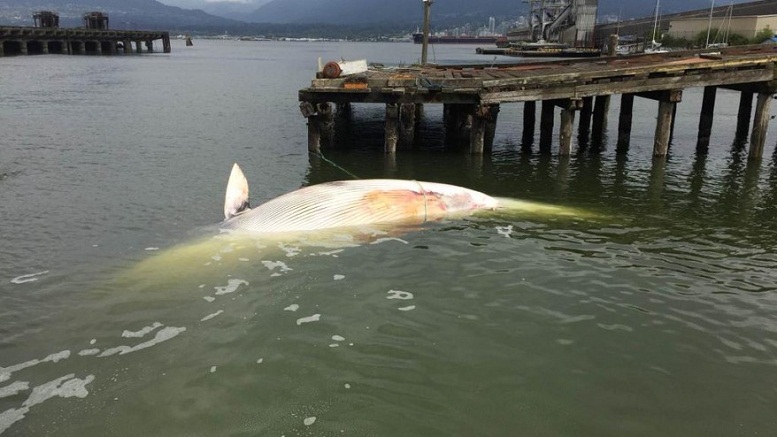-
Tips for becoming a good boxer - November 6, 2020
-
7 expert tips for making your hens night a memorable one - November 6, 2020
-
5 reasons to host your Christmas party on a cruise boat - November 6, 2020
-
What to do when you’re charged with a crime - November 6, 2020
-
Should you get one or multiple dogs? Here’s all you need to know - November 3, 2020
-
A Guide: How to Build Your Very Own Magic Mirror - February 14, 2019
-
Our Top Inspirational Baseball Stars - November 24, 2018
-
Five Tech Tools That Will Help You Turn Your Blog into a Business - November 24, 2018
-
How to Indulge on Vacation without Expanding Your Waist - November 9, 2018
-
5 Strategies for Businesses to Appeal to Today’s Increasingly Mobile-Crazed Customers - November 9, 2018
Mystery Surrounds ‘Unusual’ Death of 30 Large Whales in Alaska
Bears feeding on a fin whale carcass in Larson Bay, Alaska.
Advertisement
The outsized number of die-offs, almost three times the historical average for the region, has prompted the National Oceanic and Atmospheric Administration to declare an “unusual mortality event.”
Officials have only been able to get samples from one of the 30 whales.
About 1,200 fin whales, 5,000 humpback and 18,000 grey whales are in the northern Pacific Ocean, according to a 2013 NOAA survey. Nearly half of the unusual mortality increases since 1991 have reportedly been traced back to human interactions, biotoxins, infections, or malnutrition.NOAA Fisheries in Alaska representative, Julie Speegle, said a harmful and toxic algae blooms is the working hypothesis in the whale deaths case, according to a Daily Mail report.
Alaska has seen its coast line become the last place of whales’ lives.
The researchers made a plea for more information from the public, chiefly quick reporting when dead or distressed whales are spotted. NOAA staffers feel the waters off Alaska could have been negatively impacted by the algae bloom.
The agency also said in an online FAQ that it’s “highly unlikely” that radiation from Fukushima is playing a role, but that further testing is under way.
NOAA said in these types of investigations, it can take months or even years to collect and analyze all the data.
It is the first unusual mortality event for Whales in Alaska. The agency had previously declared such events for pinnipeds in 2011 and sea otters in 2006. Rowles told reporters during a teleconference Thursday that large-scale whale deaths are among the toughest to investigate, partly because the carcasses often are floating, rarely beached and hard to access for examination.
NOAA asks that any individual who detects a dead whale or a living upset whale call the Alaska Marine Mammal Stranding Hotline at 877-925-7773, or contact the U.S. Coast Guard on VHF Channel 16.
Advertisement
Infectious diseases are also possible culprits, as are other environmental factors, she said.




























